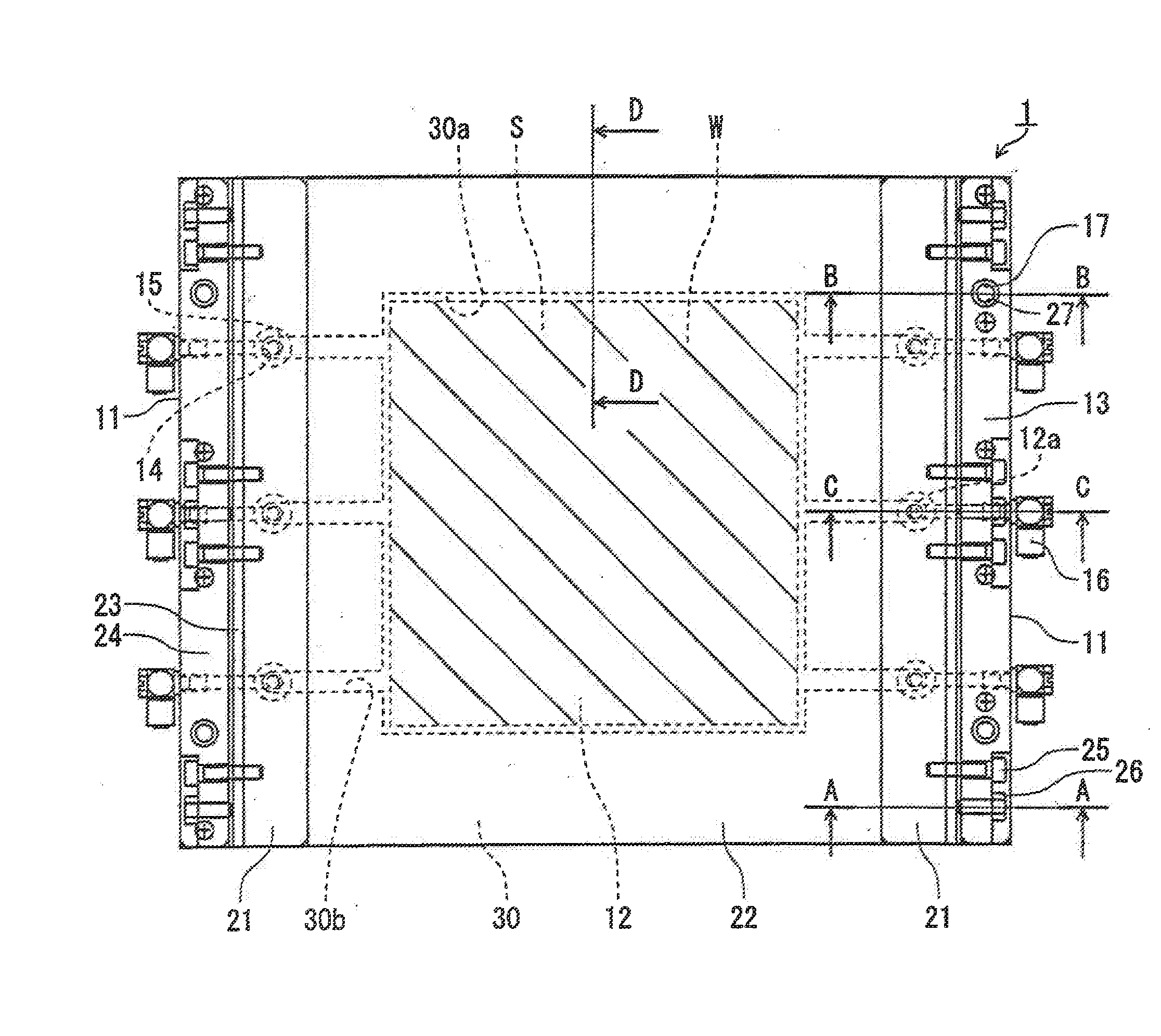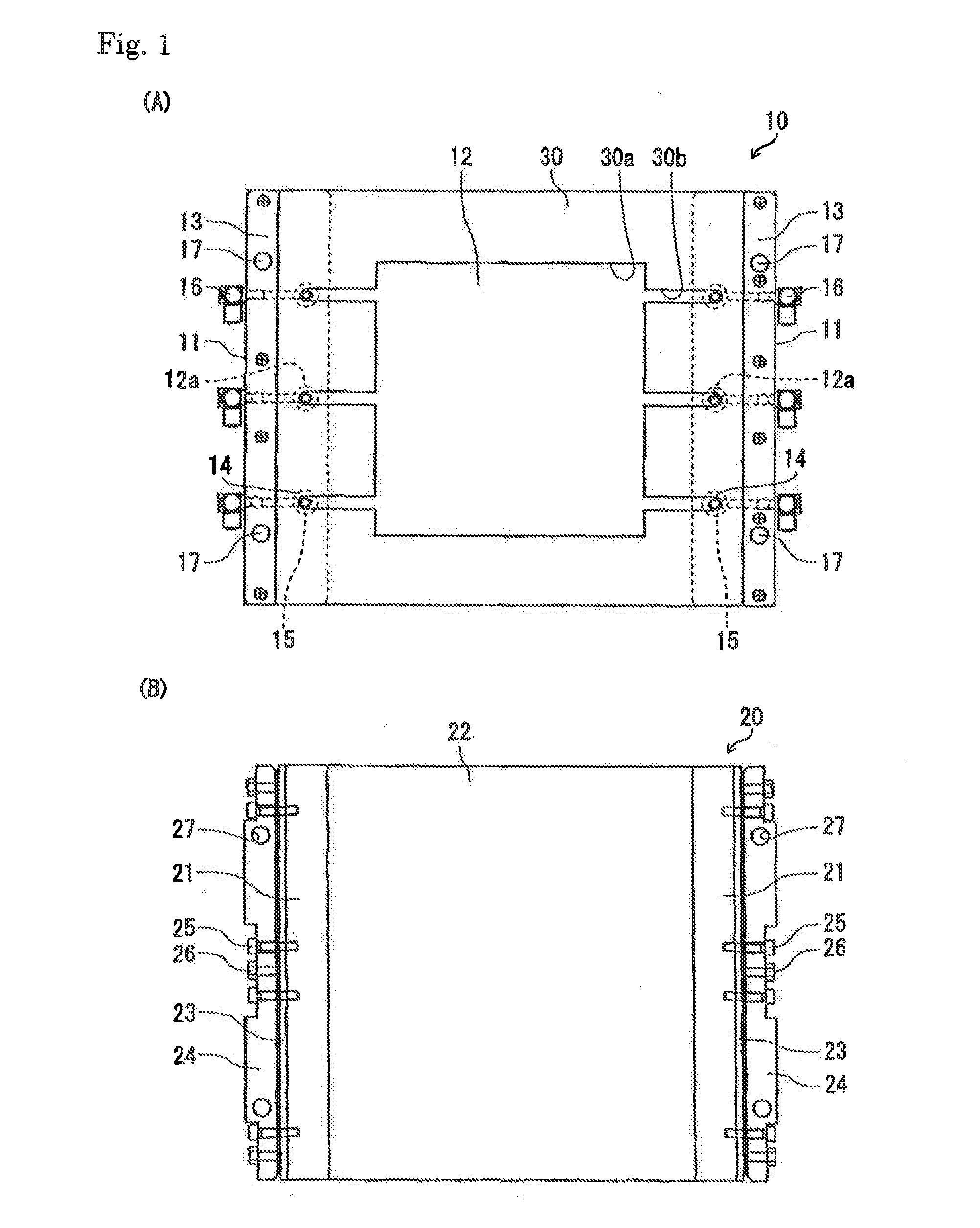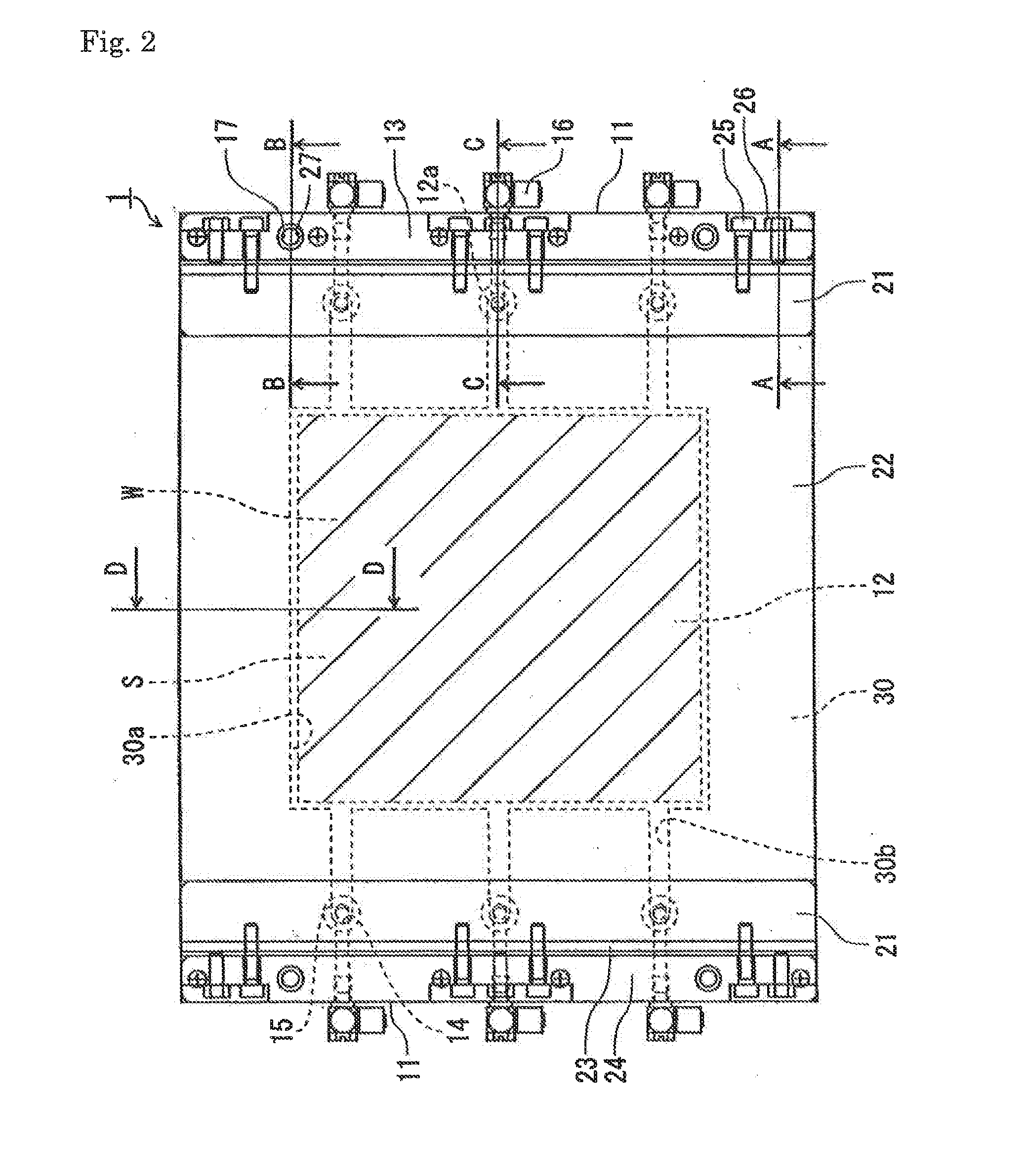Jig for fixing laminated materials, a system for manufacturing bonded laminated materials, and a method for manufacturing bonded laminated materials
a technology of laminated materials and joints, which is applied in the direction of final product manufacturing, auxiliary welding devices, sustainable manufacturing/processing, etc., can solve the problems of inapplicability to continuous pressing devices, deformation of the bonding interface, and misalignment or deformation of the membrane, etc., to achieve easy measurement, simplify the structure of the machine, and the effect of wide width
- Summary
- Abstract
- Description
- Claims
- Application Information
AI Technical Summary
Benefits of technology
Problems solved by technology
Method used
Image
Examples
first embodiment
[0085]The jig for fixing laminated materials, the system for manufacturing bonded laminated materials, and the method for manufacturing bonded laminated materials of the present invention are, by taking the MEA as an example, now described with reference to the drawings.
[0086]The structure of the jig 1 for fixing laminated materials is described with reference to FIGS. 1, 2, and 3. The jig 1 for fixing laminated materials comprises a first fixing member 10 that is connected to an exhaust device, a second fixing member 20 that is used in combination with the first fixing member 10, and a sealing member 30.
[0087]The first fixing member 10 is formed by spreading a first sheet-shaped member 12 between first columnar members 11, 11 that are disposed substantially parallel to the direction to be transported toward a machine 50 for manufacturing bonded laminated materials, which is described below. The first columnar members 11 are formed by rectangular columns. The first sheet-shaped memb...
second embodiment
[0150]With reference to the drawings, the second embodiment of the jig for fixing laminated materials of the present invention is discussed. The components that are the same as those in the first embodiment are denoted by the same numerals. So a duplicate description is omitted.
[0151]As shown in FIGS. 12, 13, and 14, the jig 2 for fixing the laminated materials of this embodiment has a member 31 for forming the housing space that is formed in the shape of a rectangular frame in the housing portion 30a of the first sheet-shaped member 12. In this embodiment, the member 31 for forming the housing space is made of stainless steel, which is a metal, at a thickness that is less than that of the laminated materials W. It is caused to adhere to the first sheet-shaped member 12 by a heat-resistant adhesive.
[0152]The member 31 for forming the housing space divides the housing portion 30a into the housing space S2 and the flow space H while it is sandwiched by the first sheet-shaped member 12...
working example
Working Example 1
[0178]In this example, an MEA for a solid polymer fuel cell is manufactured by using the jig for fixing laminated materials of the first embodiment and the machine for manufacturing bonded laminated materials, as in FIG. 6. The present invention is not limited to the following working examples.
[0179]The polymer electrolyte that constitutes the MEA is a square sheet 200 mm long and 200 mm wide that is cut from a sheet 50 μm thick. The fuel electrode and the air electrode are square sheets 190 mm long and 190 mm wide that are cut from a sheet 400 μm thick. The polymer electrolyte is a sheet made of Nafion (a registered trademark), supplied by DuPont. The fuel electrode and the air electrode are sheets made by having carbon paper support platinum catalysts.
[0180]A stainless steel sheet 300 μm thick that is polished to a mirror finish on both sides is used for the first sheet-shaped member. A sheet made of Teflon (a registered trademark) 300 μm thick is used for the sec...
PUM
| Property | Measurement | Unit |
|---|---|---|
| temperature | aaaaa | aaaaa |
| temperature | aaaaa | aaaaa |
| temperature | aaaaa | aaaaa |
Abstract
Description
Claims
Application Information
 Login to View More
Login to View More - R&D
- Intellectual Property
- Life Sciences
- Materials
- Tech Scout
- Unparalleled Data Quality
- Higher Quality Content
- 60% Fewer Hallucinations
Browse by: Latest US Patents, China's latest patents, Technical Efficacy Thesaurus, Application Domain, Technology Topic, Popular Technical Reports.
© 2025 PatSnap. All rights reserved.Legal|Privacy policy|Modern Slavery Act Transparency Statement|Sitemap|About US| Contact US: help@patsnap.com



